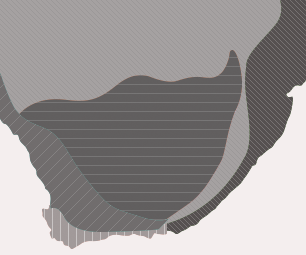Hypoxis colchicifolia
Hypoxis colchicifolia Bak.
Family: Hypoxidaceae
Common names: broad-leaved hypoxis (Eng.); iLabatheka (Zulu)
Introduction
This is a must for every South African gardener, not only for its medicinal uses, but also for its bright yellow flowers in late spring.

Description
Description
As with a lot of grassland plants, H. colchicifolia has a large underground tuber that allows it to survive the regular grassfires common to this vegetation type. These slow-growing plants are solitary, up to 600 mm in height, with erect leaves that grow in three ranks. Its interesting growth form makes it an attractive plant in a rockery or herbaceous border. The inflorescence is an auxiliary raceme with star-shaped, yellow flowers.
Distribution and habitat
Distribution description
Hypoxis colchicifolia is widespread in southern Africa and occurs in almost all the provinces except the Northern Cape. It is found on sandy or poor soils in grassland.
Uses
Use
Tubers are used for impotency and barrenness. Infusions are also taken as love charm emetics and are administered for hysterical fits. Recently it has been quoted as good for people who are HIV positive. I have personally seen people boiling it in order to drink the decoction for the treatment of acne.
Growing Hypoxis colchicifolia
Grow
This plant is useful as an accent plant in gardens where a less formal approach to landscaping has been adopted. It is particularly useful in gardens where use is made of our local grasses, as it adds an interesting contrast to the fine grass leaves.
It is easily grown from seed harvested soon after flowering. The shiny, small black seed should be sown in a well-drained mixture (milled, composted pine bark has proved suitable) and kept moist in a well-ventilated place until germination takes place (3 - 8 weeks). At the 2-leaved stage the seedlings can be potted into pots and allowed to develop for a season before planting out. A regular application of liquid fertiliser will help develop strong plants.
References
- HUTCHINGS, A. 1996. Zulu medicinal plants: an inventory. University of Natal, Pietermaritzburg.
- LEISTNER, O.A. (ed.) 2000. Seed plants of southern Africa: families and genera. Strelitzia 10. National Botanical Institute, Pretoria.
- POOLEY, E. 1998. A field guide to wildflowers of KwaZulu-Natal and the Eastern Region. Natal Flora Publications Trust, Durban.
Credits
S. Nonjinge and B.B.Tarr
KwaZulu-Natal National Botanical Garden
May 2003
.
Plant Attributes:
Plant Type: Bulb
SA Distribution: Eastern Cape, Free State, Gauteng, KwaZulu-Natal, Limpopo, Mpumalanga, North West, Western Cape
Soil type: Loam
Flowering season: Spring
PH: Acid, Neutral
Flower colour: Yellow
Aspect: Full Sun
Gardening skill: Easy
Special Features:
Horticultural zones











Rate this article
Article well written and informative
Rate this plant
Is this an interesting plant?
Login to add your Comment
Back to topNot registered yet? Click here to register.